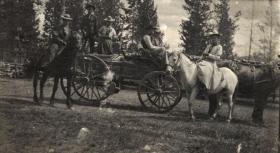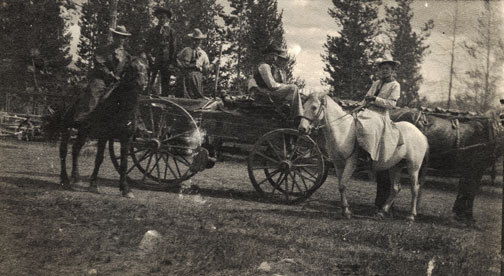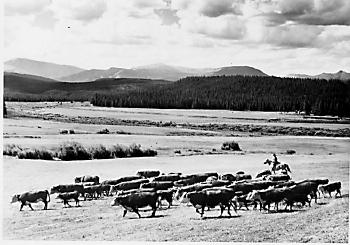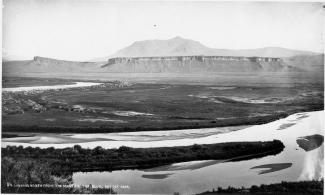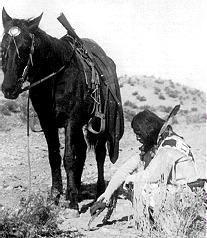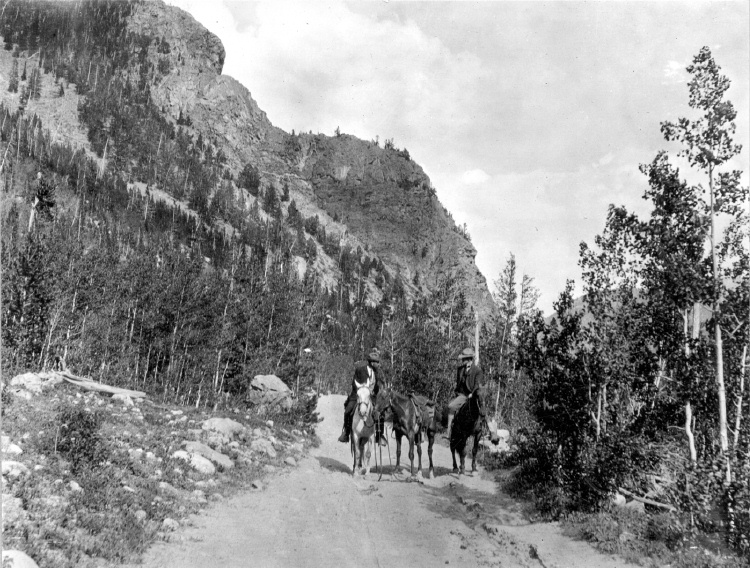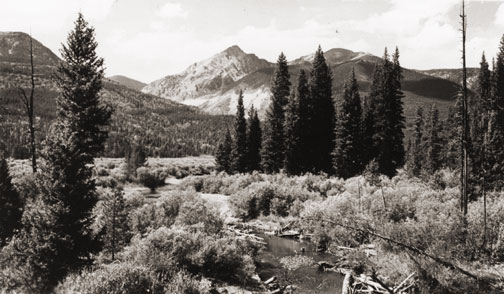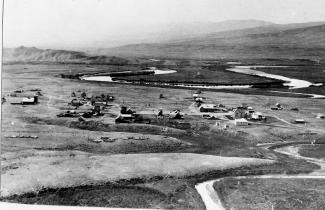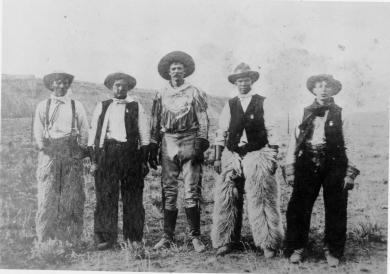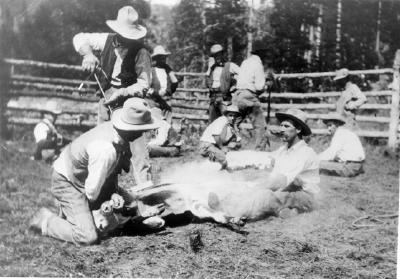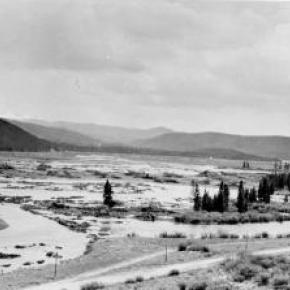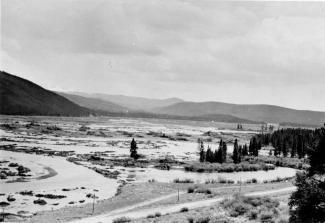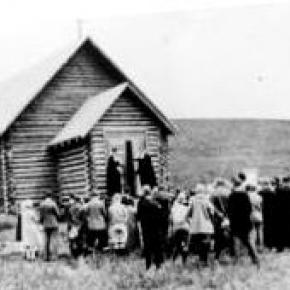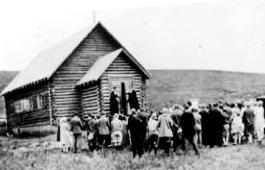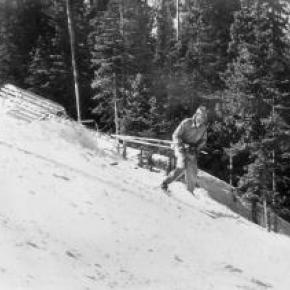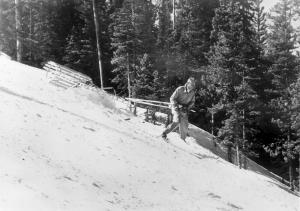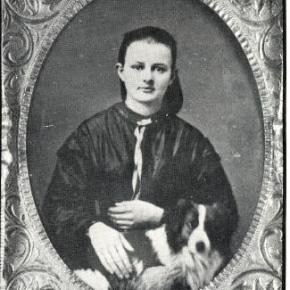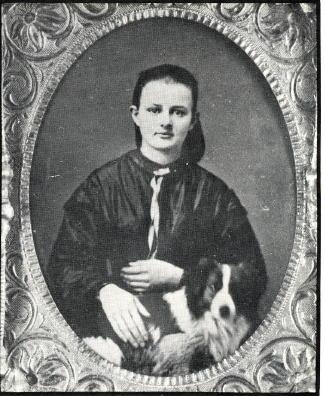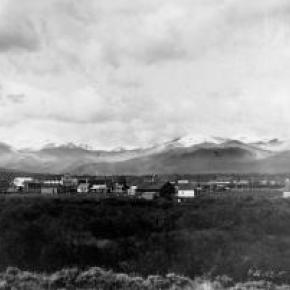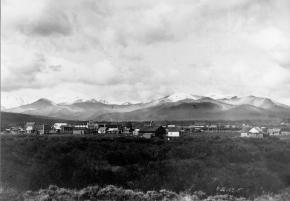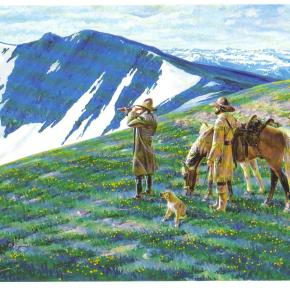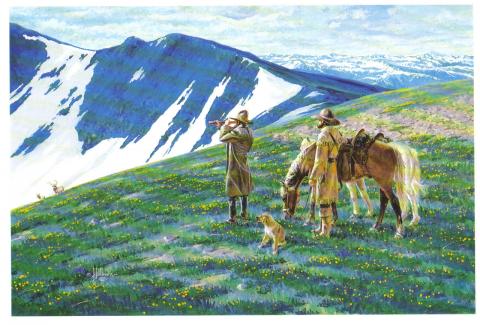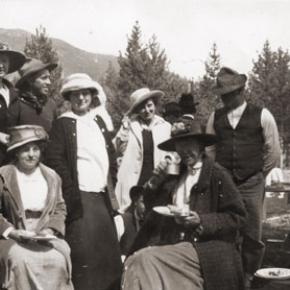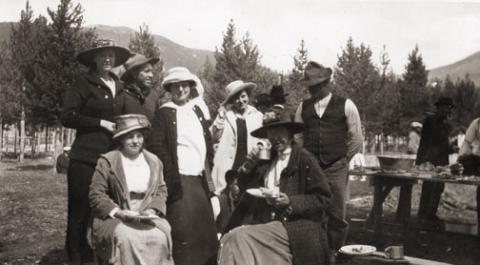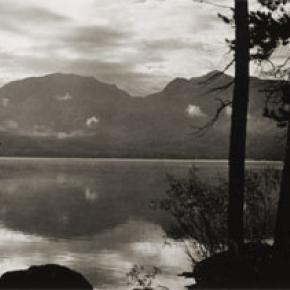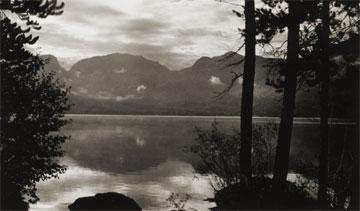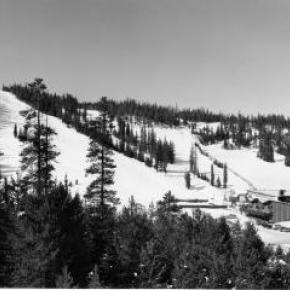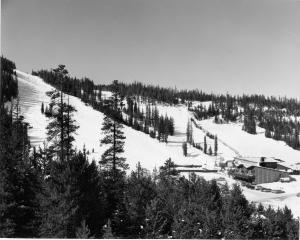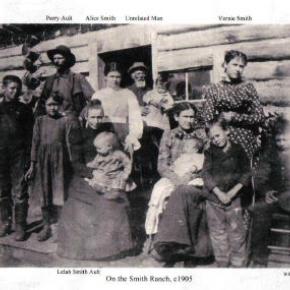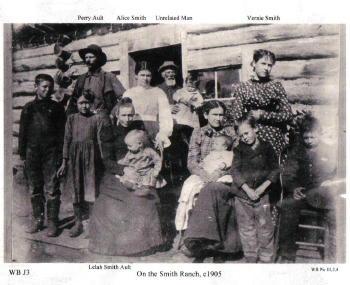It was my first Christmas in the mountains. Not only that, but it was my first time to be part of a vacation in a cozy ski inn. This was at Millers Idlewild Inn in Hideaway Park (now the town of Winter Park). I had been married only eight months. Dwight and I had worked hard, getting everything in order: clean beds, fresh spreads and curtains, floors shining and bathrooms sparkling. The woodpile was full and food supplies ready. Our plans for evenings were laid out too. Dwight would do movies. His brother Woodie would call square dances, with former Moffat Road engineer George Shryer accompanying on the fiddle and his wife, Grace, chording on the piano. Tom Smith would bring his sled and team of horses, to take happy folks along snow-packed roads for sleigh rides, to the tune of jingling bells. Games were at hand, along with a fine supply of books on the shelves. We expected a wonderfully busy two weeks, which was a good thing, because it had been a long time since our last income, before Labor Day.
Family and friends were coming tomorrow to give a hand over the holiday, and then the fun would begin. As the first guests arrived, I stepped outside, and lifting my nose, I thought, "I smell snow!" Great! The area already had a pretty good covering, so that when people called and asked, "Is there snow yet? Should we come on ahead?" we could gladly say, "Come." That night it snowed, 12" of beautiful soft flakes. Skiers were overjoyed. Dwight got out early to shovel, plow, pull people out of drifts, take others to Winter Park Ski Area, three miles away. That evening we heard that almost no stumps or rocks were evident on the slopes; all had been buried. The next night it snowed again 12" of beautiful white stuff. We were amazed. But Dwight got out early to shovel, plow, pull people out if drifts, and take others to the area. The following night it snowed again, and every night for a week, it snowed, dumping heaps of snow on the whole valley.
Winter Park Ski Area, in those days, wasn't open on Christmas Day; the management wanted to let its employees have the day at home with their families. So we took our guests to the top of Berthoud Pass; from there they could ski down Seven Mile Trail and we met them at the bottom. The day after Christmas began the busiest days of all. Back then, many families didn't leave home until the 26th. This was fine, until the passes closed from heavy snows and avalanches. Then visitors, who had to leave, couldn't drive out, but people who were coming by train could still get in! We had a problem. The parking lot was jammed with rental cars. Although some folks went ahead and left by train, many families stayed on. The rooms were completely full and after all, newcomers were entitled to their reserved space. We had guests stashed all over the lounge, extras in the dorms, and extras in the cabins. What a crowd it was. I hardly had time to think.
I cleaned all morning, helped set tables and serve, did dishes, sometimes hauled skiers to or from the area, kept up with the office work, and joined in entertaining folks in the evenings. Thank heaven for family and friends! There never was such a hectic week. But the Miller hospitality at Idlewild kept our visitors relaxed and happy. Truly, it was a jolly time, with tired skiers loafing in front of the fire, doing puzzles or playing games. There was always a group playing canasta after dinner, in the dining room, and peals of laughter would pour forth when somebody won a great hand. At last New Year's Eve came and went. The rental cars had gone back to Denver. The rooms were empty. We were alone except for a couple of guests. Making our path through the deep drifts, Dwight and I went home and flopped down on our own sofa. I heaved a sigh, saying, "Well! So that's what Christmas in the mountains is like. I had o idea there would be so much snow." Little did I know that for Christmas, 1952, we would still have the crowd of guests, but there would be hardly any snow until January!









